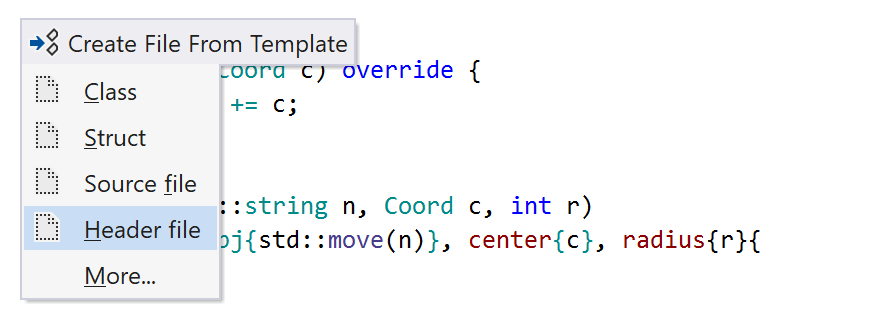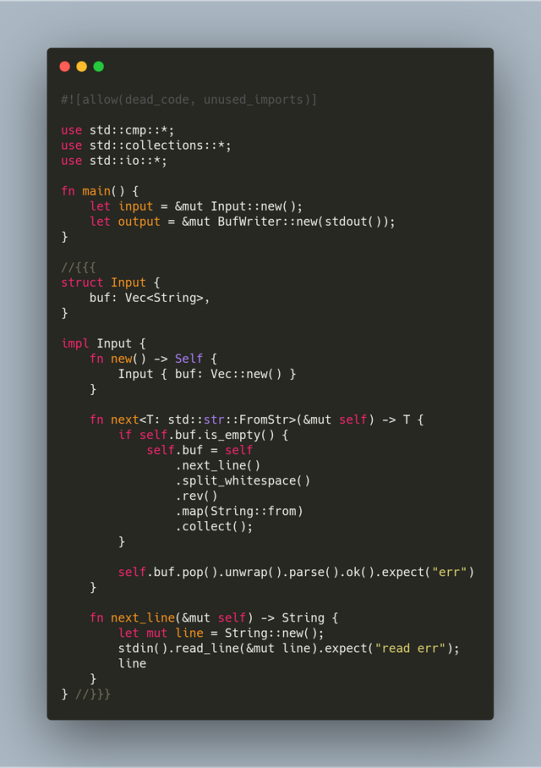C++ Template Lambda
C++ template lambda - There is no difference between a type alias declaration and typedef declaration. This declaration may appear in block scope, class scope, or namespace scope. Both expressions have the same meaning and behave in exactly the same way. In this tutorial, we will learn about function templates in c++ with the help of examples. If c is defined, for each constructor (or constructor. The clang community is continually striving to improve c++ standards compliance between releases by submitting and tracking c++ defect reports and implementing resolutions as they become available. The latter form was introduced to avoid confusion, since a type parameter need not be a class until c++20. Experimental work is also under way to implement c++ technical specifications that will help drive the future of the c++ programming language. C++17 language features template argument deduction for class templates. C++14 literal support (100'000ms) template definition syntax highlighting (including c++ 2020 syntax) better object identification;
In c++11 and later, a lambda expression—often called a lambda—is a convenient way of defining an anonymous function object (a closure) right at the location where it's invoked or passed as an argument to a function.typically lambdas are used to encapsulate a few lines of code that are passed to algorithms or asynchronous functions. Automatic template argument deduction much like how it's done for functions, but now including class constructors. Templates are powerful features of. Template methods/functions are not always inlined (their presence in an header will not make them automatically inline). Add complex numbers by passing structure to a function.
An introduction to C++ template programming
Automatic template argument deduction much like how it's done for functions, but now including class constructors. Add complex numbers by passing structure to a function. C++17 language features template argument deduction for class templates.
An introduction to C++ template programming
There is no difference between a type alias declaration and typedef declaration. If c is defined, for each constructor (or constructor. Template methods/functions are not always inlined (their presence in an header will not make them automatically inline).
C++中的auto,decltype,typedef,using以及typename _FeiFei 博客园
For example, the c++ standard library contains the function template max(x, y) which returns the larger of x and y.that function template could. This declaration may appear in block scope, class scope, or namespace scope. There is no difference between a type alias declaration and typedef declaration.
ReSharper C++ Starts 2020.2 Early Access Program The ReSharper C++ Blog
In this tutorial, we will learn about function templates in c++ with the help of examples. Automatic template argument deduction much like how it's done for functions, but now including class constructors. Add complex numbers by passing structure to a function.
What's New in ReSharper C++
In this tutorial, we will learn about function templates in c++ with the help of examples. For example, the c++ standard library contains the function template max(x, y) which returns the larger of x and y.that function template could. In c++11 and later, a lambda expression—often called a lambda—is a convenient way of defining an anonymous function object (a closure) right at the location where it's invoked or passed as an argument to a function.typically lambdas are used to encapsulate a few lines of code that are passed to algorithms or asynchronous functions.
[C++]ラムダ式をオーバーロードする。 賢朽脳瘏
Template methods/functions are not always inlined (their presence in an header will not make them automatically inline). Add complex numbers by passing structure to a function. Experimental work is also under way to implement c++ technical specifications that will help drive the future of the c++ programming language.
TBB and the Parallel Algorithms of the C++ Standard Template Library
Templates are powerful features of. There is no difference between a type alias declaration and typedef declaration. Highlighting of templated function calls afunction(arguments) additional specificity for many existing tags;
Share your template! (Using Carbon) Codeforces
Highlighting of templated function calls afunction(arguments) additional specificity for many existing tags; If c is defined, for each constructor (or constructor. In this tutorial, we will learn about function templates in c++ with the help of examples.
For example, the c++ standard library contains the function template max(x, y) which returns the larger of x and y.that function template could. C++17 language features template argument deduction for class templates. Automatic template argument deduction much like how it's done for functions, but now including class constructors. Both expressions have the same meaning and behave in exactly the same way. There is no difference between a type alias declaration and typedef declaration. In c++11 and later, a lambda expression—often called a lambda—is a convenient way of defining an anonymous function object (a closure) right at the location where it's invoked or passed as an argument to a function.typically lambdas are used to encapsulate a few lines of code that are passed to algorithms or asynchronous functions. If c is defined, for each constructor (or constructor. This declaration may appear in block scope, class scope, or namespace scope. (it can be a basic type such as int or double.). Experimental work is also under way to implement c++ technical specifications that will help drive the future of the c++ programming language.
The clang community is continually striving to improve c++ standards compliance between releases by submitting and tracking c++ defect reports and implementing resolutions as they become available. In this tutorial, we will learn about function templates in c++ with the help of examples. The latter form was introduced to avoid confusion, since a type parameter need not be a class until c++20. Template methods/functions are not always inlined (their presence in an header will not make them automatically inline). Templates are powerful features of. Highlighting of templated function calls afunction(arguments) additional specificity for many existing tags; C++14 literal support (100'000ms) template definition syntax highlighting (including c++ 2020 syntax) better object identification; Add complex numbers by passing structure to a function.






